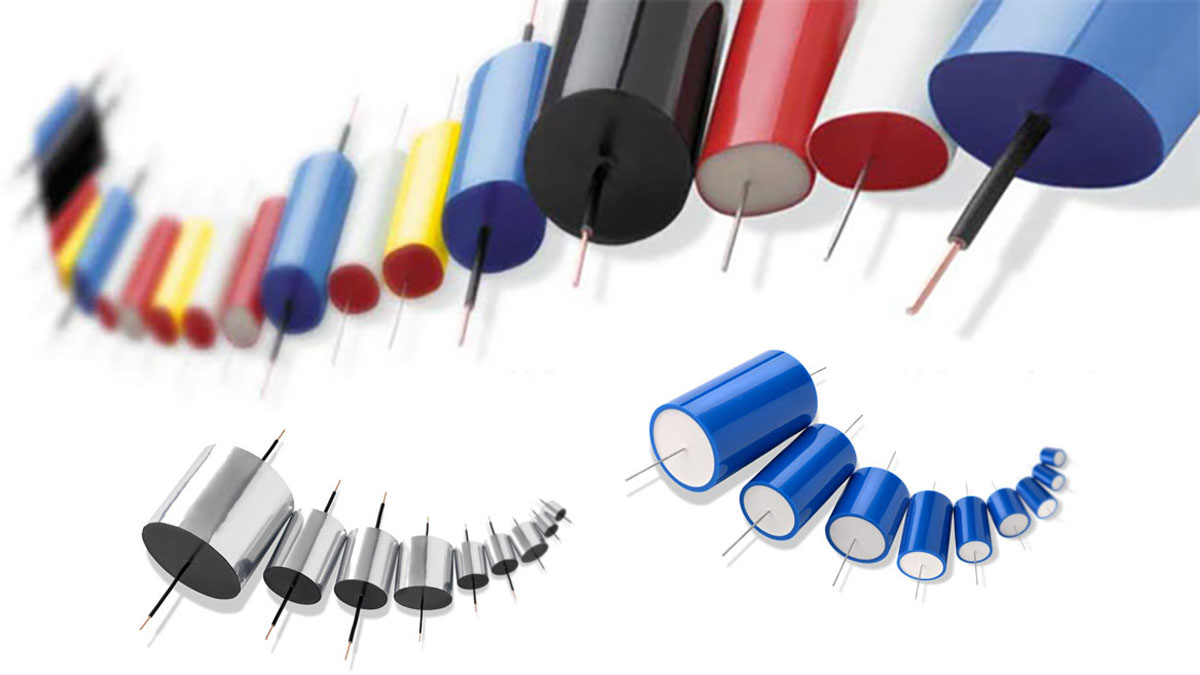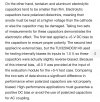No, Dc-coupling is a design option but you have to take care of unwanted DC by Design.Are capacitors in the signal path needed for balanced/symmetrical/differential input stages?
-
WANTED: Happy members who like to discuss audio and other topics related to our interest. Desire to learn and share knowledge of science required. There are many reviews of audio hardware and expert members to help answer your questions. Click here to have your audio equipment measured for free!
You are using an out of date browser. It may not display this or other websites correctly.
You should upgrade or use an alternative browser.
You should upgrade or use an alternative browser.
Decoupling/bypass & signal path capacitors for op-amps (NE5532 in Aiyima A07 vs. TPA3255evm)
- Thread starter 007Shortz
- Start date
- Thread Starter
- #42
Maybe this is one of the reasons for the exceptional performance of the Topping LA90No, Dc-coupling is a design option but you have to take care of unwanted DC by Design.
Electronic design needs to find the best compromises for a lot of aspects. So one detail is nothing because it can create problems in other areas.Maybe this is one of the reasons for the exceptional performance of the Topping LA90
- Thread Starter
- #44
That's true. But I assume that a capacitor in the signal path can be a limiting factor.Electronic design needs to find the best compromises for a lot of aspects. So one detail is nothing because it can create problems in other areas.
You always have capacitors in the signal path, not for coupling, but for band-wide limiting, filtering, and so on. In some circuits (tube amps, for example), a coupling capacitor is essential.That's true. But I assume that a capacitor in the signal path can be a limiting factor
You need to analyze the whole circuit. The hook on one part with a general statement makes no sense, as @DonH56 already said.
Last edited:
- Thread Starter
- #46
I didn't make a general statement. Instead I used words like maybe, I assume, can be..You always have capacitors in the signal path, not for coupling, but for band-wide limiting, filtering, and so on. In some circuits (tube amps, for example), a coupling capacitor is essential.
You need to analyze the whole circuit. The hook on one part with a general statement makes no sense, as @DonH56 already said.
Don't feel offended. I only want to learn more about audio circuits.
True. This is discussed in the TI app note and Self's book. The key is to have a DC bias on the cap and to keep the AC voltage < 80mV. The size of the cap depends on the impedances in the circuit so as to keep the AC voltage < 80mV at the lowest desired frequency. Also Self warns against using the el caps to set the corner frequency, because then the AC voltage will increase, and also because el caps have very poor tolerances. Just use them for DC decoupling.The impact of electrolytic capacitors in the signal path depends upon their biasing and the impedances on either side (which also determine the corner frequency). I don't think it is accurate to make a blanket statement that smaller than so-and-so produces too high distortion.
Last edited:
Not needed, but in general most audio signal paths use capacitors somewhere to block DC, because DC is never beneficial for audio.Are capacitors in the signal path needed for balanced/symmetrical/differential input stages?
Normally the signal path is biased at 0V and the amplifiers use +/- symmetric supplies, so no capacitors are absolutely needed to block DC, especially for balanced inputs where the DC gets canceled. But the TI/Aiyima are single sided designs with only a +12V supply, with an AC signal biased around +6V. That type of circuit absolutely needs a blocking capacitor between the inputs at 0V and the op amps biased at 6V.
Last edited:
It depends upon details of the circuit design. A DC-coupled design will not have capacitors, but many designs do include them (differential or not) to prevent amplifying DC (not usually desirable as it can quickly destroy speakers) and/or because the biasing of the input (or output) stage my not be centered around ground.Are capacitors in the signal path needed for balanced/symmetrical/differential input stages?
I have a short article on differential circuits in the list linked in my signature but am not sure I discuss biasing in any detail. Some balanced/differential circuits can tolerate DC, some may not, and others may accommodate a limited range and clip (or fail) outside that range. A typical example is a device powered from a single rail, such as a small amp using a simple power supply with +15 V to ground. Without a negative (-15 V) supply, to get the largest input signal range without clipping, the input stage is biased in the center of the supply range at +7.5 V. That allows the input to swing +/-7 V or so around 7.5 V, so roughly 0.5 V to 14.5 V. To prevent that average 7.5 V from being applied to whatever is plugged into the input, input coupling capacitors are used, with the dC bias circuit after the capacitors so the input works swinging around ground.
The common-mode range is usually specified in a differential design, input and output, to let you know if two devices are compatible without coupling capacitors.
Edit: @Zapper beat me to the post, we're saying the same thing, I took more words to get there.
Last edited:
Self says in his book that DC bias is not needed. Does someone know any measurements which proof or disproof his claim?True. This is discussed in the TI app note and Self's book. The key is to have a DC bias on the cap and to keep the AC voltage < 80mV.
Yep.The size of the cap depends on the impedances in the circuit so as to keep the AC voltage < 80mV at the lowest desired frequency. Also Self warns against using the el caps to set the corner frequency, because then the AC voltage will increase, and also because el caps have very poor tolerances. Just use them for DC decoupling.
Self says in his book that DC bias is not needed. Does someone know any measurements which proof or disproof his claim?
Attachments
One more factor, the caps voltage rating. When used for DC blocking a 50v 100uf cap has lower distortion than a 25v 100uf.

 audioxpress.com
audioxpress.com

Selecting Electrolytic Capacitors for Lowest Distortion
Douglas Self shares real experiments when selecting electrolytic capacitors to achieve the lowest distortion. An experiment inspired by his recent audioXpress article, "Optimizing Variable-Frequency Tone Controls," available online. This short piece is an interesting closer examination on the...
Dimitri
Senior Member
Just a reminder (and I like a thread going off the rails and the topic as much as the next guy), the discussion started as an inquiry regarding bypass capacitors and has developed into capacitors in the signal path.

How did you do a blind test when you are changing the hardware?No way. For 100% it is noticeable. In blind test 10 out of 10.
DHT 845
Addicted to Fun and Learning
- Joined
- Feb 28, 2021
- Messages
- 509
- Likes
- 444
I had 2 the same DACs and modified one of them and made comparisons with broad community of experienced audiophiles. One of my (budged, $1200 List price) modified DAC sounded better than $25.000 DAC. But I will not share anything more about that case so do not even ask.How did you do a blind test when you are changing the hardware?
Are you sure one wast unstable (ringing)? Measurements would prove things.I had 2 the same DACs and modified one of them and made comparisons with broad community of experienced audiophiles. One of my (budged, $1200 List price) modified DAC sounded better than $25.000 DAC. But I will not share anything more about that case so do not even ask.
How do you know the difference didn't come from other differences (eg component tolerances) between the two dacs?I had 2 the same DACs and modified one of them and made comparisons with broad community of experienced audiophiles. One of my (budged, $1200 List price) modified DAC sounded better than $25.000 DAC. But I will not share anything more about that case so do not even ask.
EDIT: Or as pointed out by @Cbdb2 - due to instablity caused by your design mod.
DHT 845
Addicted to Fun and Learning
- Joined
- Feb 28, 2021
- Messages
- 509
- Likes
- 444
Nonsens. 2 identical DAC with the same sound signature at the beginning. Tolerances, no, the problem IMO is "highly overrated", but in some cases I may be wrong.How do you know the difference didn't come from other differences (eg component tolerances) between the two dacs?
Measurements are nonsense? Whats nonsense is "DAC sound signature."Nonsens. 2 identical DAC with the same sound signature at the beginning. Tolerances, no, the problem IMO is "highly overrated", but in some cases I may be wrong.
Thanks, brand new results by Self himself. Good to know but one really has to measure the caps performances since he found caps where higher DC spec did not deliver lower distortion as expected. Hmmm.One more factor, the caps voltage rating. When used for DC blocking a 50v 100uf cap has lower distortion than a 25v 100uf.

Selecting Electrolytic Capacitors for Lowest Distortion
Douglas Self shares real experiments when selecting electrolytic capacitors to achieve the lowest distortion. An experiment inspired by his recent audioXpress article, "Optimizing Variable-Frequency Tone Controls," available online. This short piece is an interesting closer examination on the...audioxpress.com
Similar threads
- Replies
- 3
- Views
- 1K
- Replies
- 18
- Views
- 4K
- Locked
- Replies
- 24
- Views
- 2K

